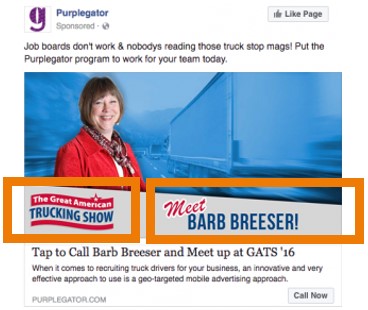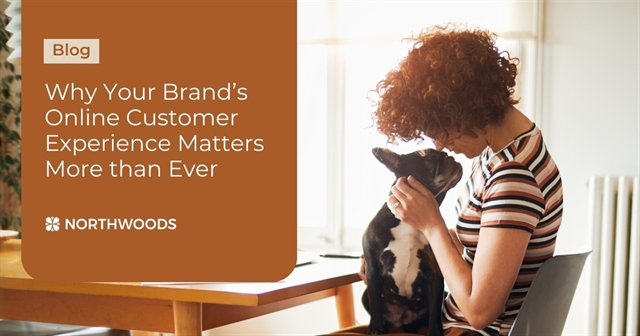By Northwoods Team
July 16, 2019
4 Minute Read
What is Proximity Marketing?
Proximity marketing, also known as location-based marketing, geo-targeting and geo-fencing, aims advertising at users as they visit a specific “geo-fenced” location or after they have left that location.
Mobile, naturally, is the preferred device and social media the most powerful channel for capturing users’ attention when they are on the go and present within a geo-fence. Social works very well when the goal is to prompt a specific user action.
To reach users after they’ve exited the geo-fenced area, a combination of desktop and mobile marketing makes sense. Both platforms can serve banner ads across a wide range of websites and mobile apps outside of social media. This route sustains brand awareness for a very precise audience.
When Should I Leverage Proximity / Location-Based Marketing to Grow My Business?
Location-based advertising can be an extremely effective tactic within an overall marketing mix. Consider deploying this tactic in use cases such as:
|
Business Type
|
Geo-Targeted Audience Example
|
|
Physical Store
|
Physical visitors to a list of your competitors’ stores within, say, a 15-mile radius and the last 10 days.
|
|
Personal Injury Law Firm
|
Physical visitors to specific hospitals within your target market within the last 30 days.To target dental employees: Frequent visitors (three or more visits) to selected dental offices within your target market.
|
|
Dental Equipment & Supplies
|
To target dental employees: Frequent visitors (three or more visits) to selected dental offices within your target market.
|
|
Annual Festival
|
To promote an upcoming festival: Physical visitors to last year’s festival.
|
|
Annual Festival
|
Physical visitors, captured via social, as they stroll the festival grounds. This will expand your social audience, and those new social connections will become targets for promotion of subsequent festivals.
|
|
Trade Show Booth
|
Physical visitors to the trade show facility and surrounding hotels, via social. An ad example for promoting your booth: Attending X event? Stop by booth X for a Free X!).
|
What are the Benefits of Location-Based Marketing?
- Superb Targeting
- Extremely Low Cost
- Impressive Reach
- Competitive Edge
Location-based marketing delivers digital advertising to highly specific audiences you couldn’t reach otherwise.
The ability to target physical visitors in any location, within any time frame, and with any visit frequency opens endless targeting capabilities and opportunities. The only limit? Your creativity.
Proximity marketing, though wildly under-utilized, targets the right audience – a crucial aspect of any digital advertising campaign. This tactic, as part of a complementary digital marketing mix, will sharpen your brand’s competitive edge.
What are the Disadvantages of Location-Based Marketing?
Social media platforms insist on geo-fencing areas broader than an advertiser might prefer in a location-based campaign. The Facebook and Instagram minimum target location, for example, is a 1-mile radius around a specific point. That could sweep up many irrelevant users beyond the preferred target area of, say, a specific store.
We have a work-around for the social limitation. It’s not perfect, but it does further refine the target area. It will do until Facebook/Instagram offers more sophisticated proximity marketing.
Our social-media fencing workaround starts with the 1-mile radius. We then place a number of points just outside the radius, each with its own 1-mile radius. Then we exclude those areas, to leave just the bullseye in the middle.
Standard Facebook/Instagram Location-Based Targeting (1-mile radius around a point):

Refined Facebook/Instagram Location-Based Targeting with Workaround:

By the way, none of this is a problem outside of social. You can target as precisely as a section of a store. You can target a parking lot. (No luck finding that gizmo? Before you drive home disappointed, Search Here to see if we have it in stock!)
Proximity / Location-Based Marketing Examples
Facebook is by far the most-used social platform by adults in the U.S.; 51% of users check it several times a day. The average person touches their phone 2,617 times a day, scrolls through 300 feet of social content, and is obviously addicted to both mobile and social. Note also that Facebook offers the lowest cost per click of all major social ad platforms.
To capture user attention and to spur action, outside of search, start with Facebook. Let’s look at some use cases:






(source: eventmanagerblog.com)
How Do I Get Started with Proximity and/or Location-Based Marketing?
As a digital marketing agency with deep experience in proximity / location work, we can help. Watch a recording of our proximity marketing webinar to get additional details and insights.
Want to go it alone? Start with Facebook Ads, Onscreen Media, GroundTruth. Each come with pros, cons and use cases, but they’re our favorites in our own proximity marketing campaigns.
Related Blog Posts

Brands that create exceptional digital experiences have an excellent opportunity to win new customers and enhance brand loyalty. Go back to the basics to improve your online customer experience (CX) with these nine tips.

Use insights from your PPC campaign to boost your SEO and content marketing efforts for a truly robust digital marketing strategy.